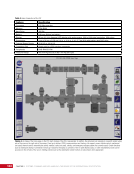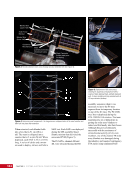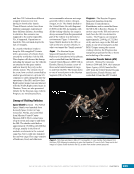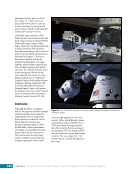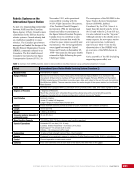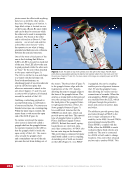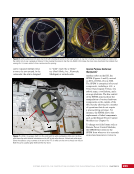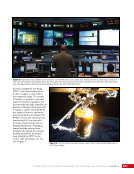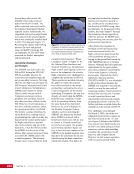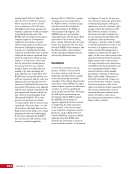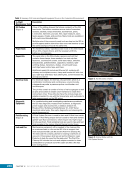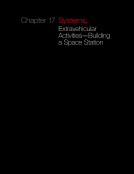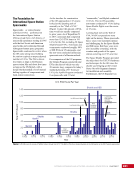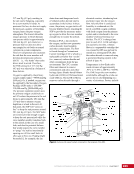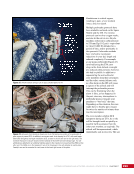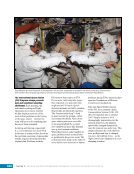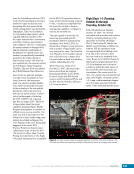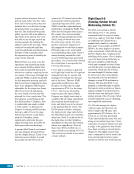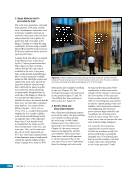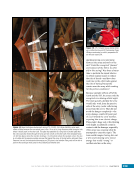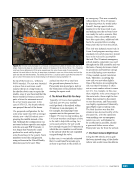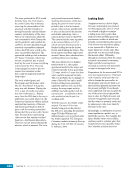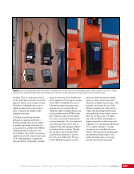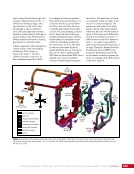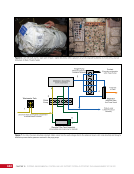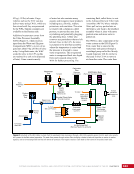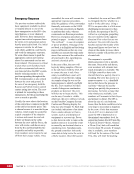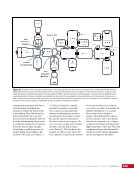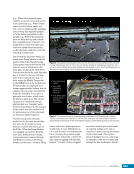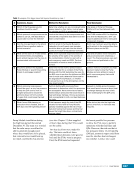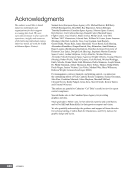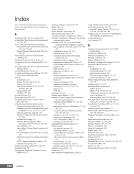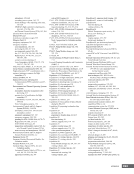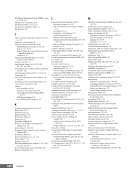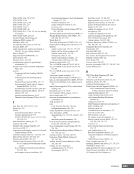235 DAY IN THE LIFE: VITAL VISITING VEHICLES—KEEPING THE REMOTE OUTPOST CREWED AND OPERATING CHAPTER 14 and June 2015 when three different resupply missions were lost during or shortly after launch. Three different rockets from three different companies experienced three different failures. According to statistics, this scenario was supposed to be nearly impossible. Yet, it happened. Operations on board the ISS continued despite the lack of resupply. So, exactly what does it take to keep the ISS resupplied? It starts with a procession of vehicles from around the world that visit the ISS. This chapter will discuss this lineup, including the unique way the vehicles are attached to the space station and how heavily they rely on the robotic system. The critical role of the crew, how a vehicle controlled by another government or a private US company is safely integrated into the operations of the ISS, and how their flight control teams train and interact with the NASA flight control team in Houston, Texas, are also presented. Details for the Russian cargo vehicle, Progress, are not discussed here. Lineup of Visiting Vehicles Space Shuttle (retired)—The NASA Space Shuttle was launched from Kennedy Space Center in Cape Canaveral, Florida, and controlled from Mission Control Center- Houston (MCC-H). It carried crew of up to seven and cargo to and from the ISS. The shuttle could deliver approximately 19,000 kg (42,000 lbs) of cargo, usually in the form of modules or elements in the external cargo bay, but it could also transport dry and wet cargo. Dry cargo consists of hardware, food, and other non- wet consumables whereas wet cargo generally refers to water, nitrogen, oxygen, or air. The shuttle docked to the United States On-orbit Segment (USOS) of the ISS. As happens with all the visiting vehicles, dry cargo is always accessed from the pressurized part of the vehicle in a shirt-sleeve environment. Figure 1 shows the Space Shuttle docked to the ISS, as well as the next several vehicles, in what was termed the “family portrait.” Shuttle Endeavour STS-134/ISS-ULF-6 Progress (42P) ATV-2 Soyuz (26S) Figure 1. This image was taken in May 2011 by Expedition 27 crew member Paolo Nespoli from the Soyuz (25S) following its undocking to return the Expedition 27 crew to Earth. These are the first images of a Space Shuttle docked to the ISS, as taken from another crewed spacecraft. Soyuz—The Russian Soyuz Spacecraft launches from the Baikonur Cosmodrome in Kazakhstan, and is controlled from the Mission Control Center-Moscow (MCC-M) in Korolev, Russia. It carries a crew of three and a limited amount of cargo to and from the ISS. The Soyuz docks to one of several ports on the Russian Segment (RS) of the ISS. Progress—The Russian Progress Spacecraft launches from the Baikonur Cosmodrome in Kazakhstan, and is controlled from the MCC-M in Korolev, Russia. It carries cargo to the ISS and removes trash from the ISS via destructive reentry. The Progress can transport approximately 2,600 kg (5,732 lbs) of dry and wet cargo to the ISS and docks to one of several ports on the ROS. Unique among the current visiting vehicles, the Progress also transports propellant for the re-boost and refueling of the station. Automated Transfer Vehicle (ATV) (retired)—During five missions between 2008 and 2014, the European Space Agency (ESA) launched the ATV from the Centre Spatial Guyana near Kourou, French Guiana, and controlled it from the ATV Control
Purchased by unknown, nofirst nolast From: Scampersandbox (scampersandbox.tizrapublisher.com)








































































































































